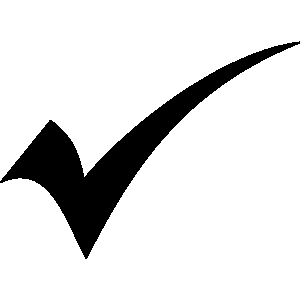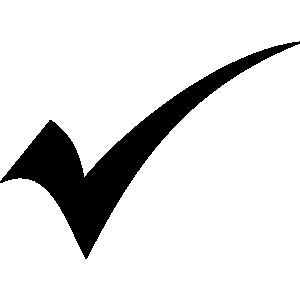The Top Ten Mistakes People Make When Riding Horses
Avoid these ten common mistakes enjoy the ride!
1. GRIPPING WITH KNEES OR THIGHSMany riders firmly believe that they must grip the horse somewhere—hands, knees, thighs, or calves—or else they will surely fall off the horse. In fact, if they screw up their courage sufficiently to try relaxing their grip, they often do in fact fall off the horse because they have not developed their balance. The problem is that anywhere you grip the horse, you are impeding his motion. And as you grip, you are rigidly locking your joints such that your body cannot absorb and “float” with the horse’s motion. The result is an uncomfortable horse and a rigid rider perched uneasily on the horse’s back. You can’t get anywhere good from there. Your balance keeps you on the horse. That means you are balanced softly on your seat bones and your legs are stretched softly down the horse’s barrel on either side. The image that is most useful is damp towels draped across the horse’s back and down it’s sides.Here are more valuable tips on developing a secure seat.
|
2. "COCKED" OR FLATTENED WRISTSMany riders hold the reins with their wrists bent into a “U”, holding the reins with their ring fingers clenched. People who ride like this usually finish the job by gripping tightly with their knees. This has several unfortunate outcomes. It usually means the rider is balancing on the horse’s mouth (see #1 above), and is “steering” the horse with her hands. The horse, in response, will develop a very hard mouth, arched back, and rigid jaw. Here are horse training tips for developing "educated hands"--a wonderful term frequently used by George Morris.
|
3. "HANDSY" HALF HALTSMany riders are confused about how to ride a half halt or what it’s purpose is. As a result, they clutch the reins in order to “slow the horse down”, which puts the horse on her forehand and interrupts the natural flow of the horse’s gait—which entirely defeats the purpose of the half-halt. Half halts are used to rebalance the horse, putting more of the horse’s weight on his hindquarters, thereby allowing more impulsion from behind. Of all the horse training tips, this one will give you the most "bang for the buck." Here's how to do a real half halt. And here's a special half halt for jumping.
|
4. INCORRECT JUMPING RELEASEGeorge Morris introduced the crest release into the hunter circuit, then almost immediately regretted it. The idea was to have a student press her knuckles lightly into the horse’s neck so that when the horse jumped, her arms would stretch forward with the horse, allowing the horse freedom of movement. Almost overnight, students everywhere were pressing down fiercely on their horse’s necks and resting all of their weight there at the exact moment when their poor mounts needed to reach their necks up and forward to jump. The crest release also spawned generations of riders who rely so much on their hands in jumping that they have virtually no two-point seat balance at all. To correct this, Morris and others introduced the automatic release which so far seems to accomplish Morris’ original teaching goals. This is the best of horse training tips for hunters and jumpers. Give up the crest release and adopt the automatic release instead.
|
5. “DEAD HANDS”If you think hands are for holding on and steering, then you’re going to have unfeeling, insensitive hands and a hard horse mouth. Here's how to develop an "elastic feel".
|
6. RELYING TOO MUCH ON THE INSIDE REINThe inside rein is either the emergency brake (if used strongly) or the polish (if used sensitively). It is not how you turn a horse or keep a horse on the bit. Here's how to use your reins more effectively. Your horse will thank you.
|
7. HORSES WITH NOSES ON THEIR CHESTSBeing on the bit means that the horse is connected to the rider’s hands with a firm but elastic feel. It does not mean the horse’s nose is on his chest or on the ground. A horse that is ridden with an firm elastic hand will have his face on the vertical and his poll as the highest point (when collected or extended), not the crest. All you dressage riders: If your horse’s crest is the highest point when you’re riding, let up, will ya!
|
8. GOING FASTER RATHER THAN LONGERAsking a horse to extend by posting faster or driving with the seat won't get you much extension--just a choppy, running horse. A horse extends by lengthening iher entire body, not by getting faster or by arching her back as she paddles she front legs out front. By using the hands and seat in a coordinated fashion, your can get your horse to stretch out her body or collect it.
Here are some tips for improving impulsion and extension. |
9. LONGEING BY CHASING THE HORSE AROUND WITH A WHIPRiders with dead hands and confusion about what impulsion means usually have a difficult time longeing horses. The horse either goes around with her nose on the ground, in an oval rather than a circle, or runs around wildly while the rider yells “Whoa, Nelly!” By improving longeing technique, you can also improve your aids in ways that transfer readily to mounted work. Your horse will thank you for these horse training tips. Follow this system to make longeing really work for you and your horse.
|
10. FEAR OF RIDINGNo matter how accomplished you are as a rider, there will come a time when a kind of "toxic fear" overcomes you. It may follow a seemingly minor horse accident (like falling off your horse, or having your horse bolt). It may arise from factors that have absolutely nothing to do with riding, but you won't know that. Of all the horse training tips anyone will ever give you, this one can bring back the freedom and joy of riding. Here is how to deal with toxic fear.
|
Copyright Denise Cummins, PhD January 2009; updated June 1, 2024
The Thinking Equestrian
As long as you’re here, check these out!
Recommended equestrian products—riding clothes, tack, horse supplements, and more!
Tips for Improving Your Riding
Get Fit To Ride!
The Thinking Equestrian
As long as you’re here, check these out!
Recommended equestrian products—riding clothes, tack, horse supplements, and more!
Tips for Improving Your Riding
Get Fit To Ride!











